TORQUE CONVERTER CLUTCH SHUDDER DIAGNOSIS,125C

MODELS AFFECTED: ALL THM 125-C TRANSAXLES
Some THM 125-C transaxles may exhibit torque converter clutch (TCC) shudder as the TCC applies and/or after it applies when the accelerator pedal is depressed slowly (Crowd Shudder). These types of shudder are best described as a jerking sensation. In some cases the shudder may cause the instrument panel to vibrate.
Listed below are items which may cause a "TCC Apply Shudder" and/or a "TCC Crowd Shudder".
CONDITION CAUSE AND CORRECTION --------- -------------------- Note: Before any attempt is made to correct a TCC Shudder comment spark plug insulators should be checked for possible cracks. A cracked insulator can cause a candition that may be misdiagnosed as TCC Shudder. Also a cracked insulator may not show up at idle or on a scope test.
TCC APPLY TCC CROWD SHUDDER SHUDDER x x 1. An intermittent or incorrect signal from the vehicle speed sensor (VSS). Dirt or grease on the reflective bar in the VSS may be sending an incorrect or erratic signal so that the converter clutch engages early. An easy means of verifying this is to check mph on an ALDL tool with that on the speedometer in the car - if the readings vary greatly, remove the VSS and clean it.
x x 2. The auxiliary valve, body cover attaching bolts may be loose or the bolt threads/holes may be shallow. If the holes are shallow, the bolts will bottom out without torquing the cover down.
CONDITION CAUSE AND CORRECTION --------- -------------------- TCC APPLY TCC CROWD SHUDDER SHUDDER
x 3. Some 1982 models were built with either an exhaust hole or an orifice cup plug in die auxiliary valve body cover. The auxiliary valve body cover was changed to a solid cover (no exhaust hole or orifice cup plug) in 1982. The service auxiliary valve body cover, part number 8643645, should be used on all models to prevent shudder. The service part does not have an orifice cup plug.
x 4. If the transaxle being serviced has the auxi- liary valve body with the orificed cup plug, particles of the auxiliary valve body cover gasket may have torn loose. This material may be sticking the torque converter clutch apply valve and/or plugging the converter release orifice in the control valve body spacer plate. If this is found, disassemble the auxiliary valve body and thoroughly clean. Also, be sure to remove any gasket particles in the valve body spacer plate converter release orifice hole and replace the auxiliary valve body cover gasket, part number 8653947. Figure 1.
x 5. Check the valves in the auxiliary valve body for freeness. (They must move in and out of their bore without sticking.)
x 6. For gas engine/transaxles, the auxiliary valve valve body converter clutch control regulator spring may be weak and require replacement with a new spring, part number 8637888. The new spring which has a stronger load capacity went into production on February 20, 1984, for U.S. built and March 5, 1984 (Julian date 065) for Canada built THM 125-C transaxles. Refer to Chart 1 for serial number breakpoints for U.S. built units. For Canadian built units use Julian date code. For explanations of nameplates, for this information refer to Figure 2 (U.S.) and Figure 3 (Canada).
CONDITION CAUSE AND CORRECTION --------- -------------------- TCC APPLY TCC CROWD SHUDDER SHUDDER x x 7. Inspect the pump shaft to valve body seal for cuts, damage, distortion. Refer to Bulletin 82-I-93, Group 70 for procedure.
x x 8. A new governor pressure switch went into production for diesel models only, in late 1982. This change corrects the "Shudder" feel by raising the converter clutch apply speed.
TRANSAXLE GOVERNOR SWITCH MODEL PART NUMBER --------- --------------- OP 8643369
x 9. Inspect the turbine shaft Teflon seals and "O" ring seal for damage, cuts, distortion (see Figure 4 for these parts) . If the teflon seals require replacement, make sure they are installed and sized as shown in Figure 5.
x 10. Inspect the turbine shaft seal grooves. A step in the bottom corners of the seal groove will keep the seal from contacting the side wall of the groove and will prevent proper sealing (Figure 6). If this condition is found, replace the turbine shaft and seals.
x 11. Check the case cover sleeve converter feed oil hole for being out of alignment with the oil channel in the case cover (Figure 7).
x 12. Check the converter end play, using tool J-29830. The end play specification is .5mm (.020"). Converters with end play more than .5mm (.20") must be replaced.
x 13. The turbine shaft sleeve may be leaking excessively. If all of the above items are OK, replace this shaft.
CHART 1
U.S. MODELS -----------
MODEL SERIAL NO. MODEL SERIAL NO. ----- ---------- ----- ---------- CA 2226 PE 50353 CB 156657 PE 22983 CE 67281 PF 47268 CF 5938 PG 6007 CT 4574 PJ 67271 PD 2080
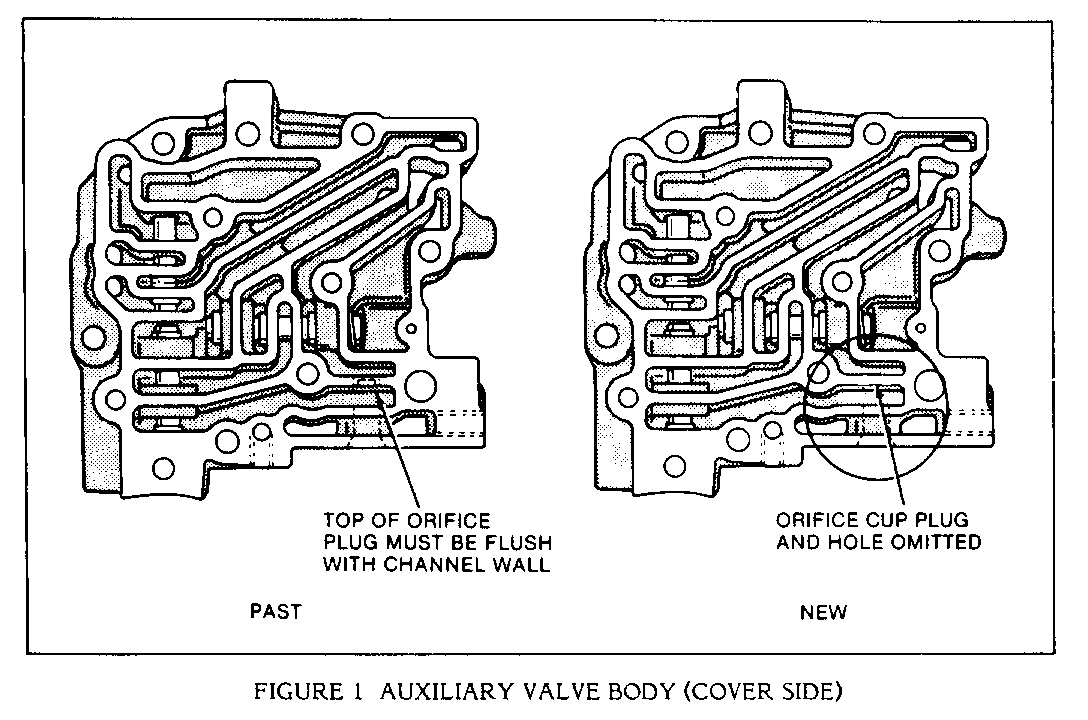
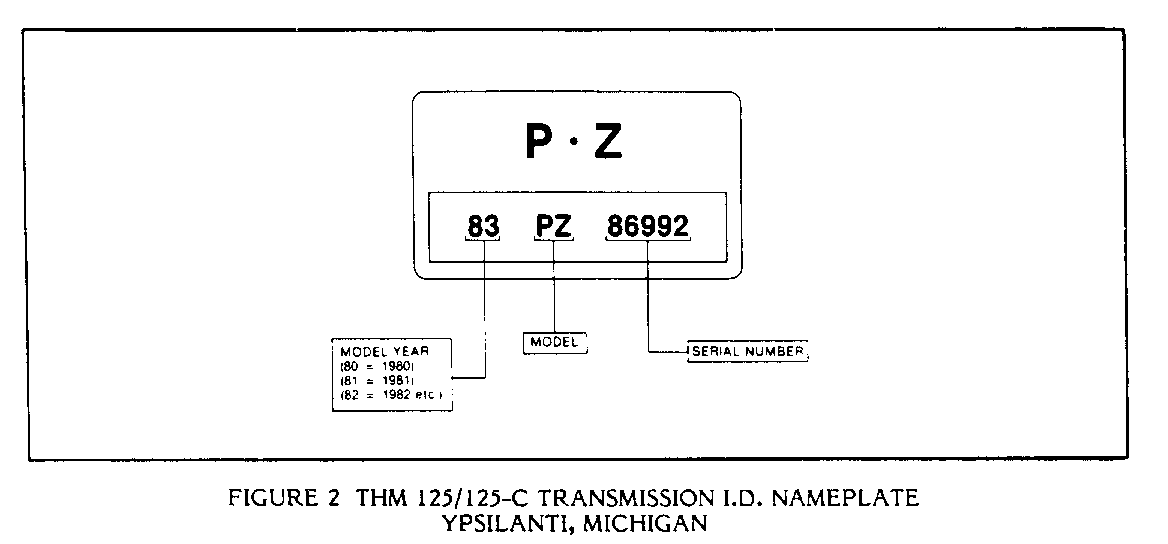

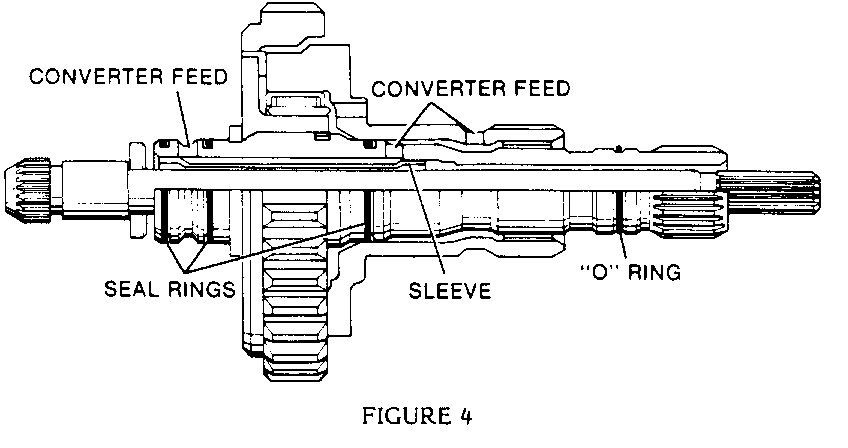

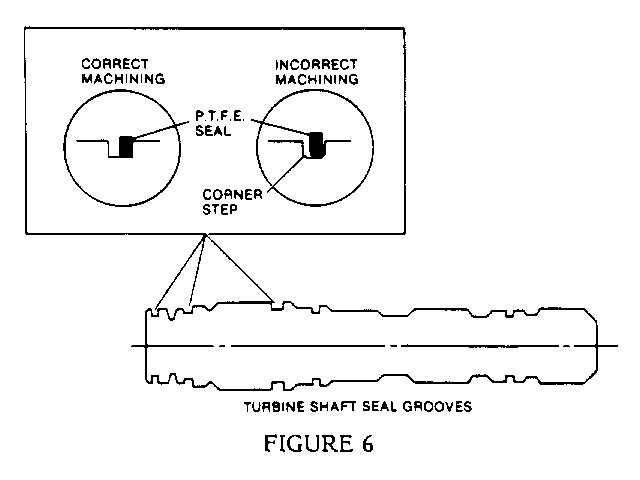
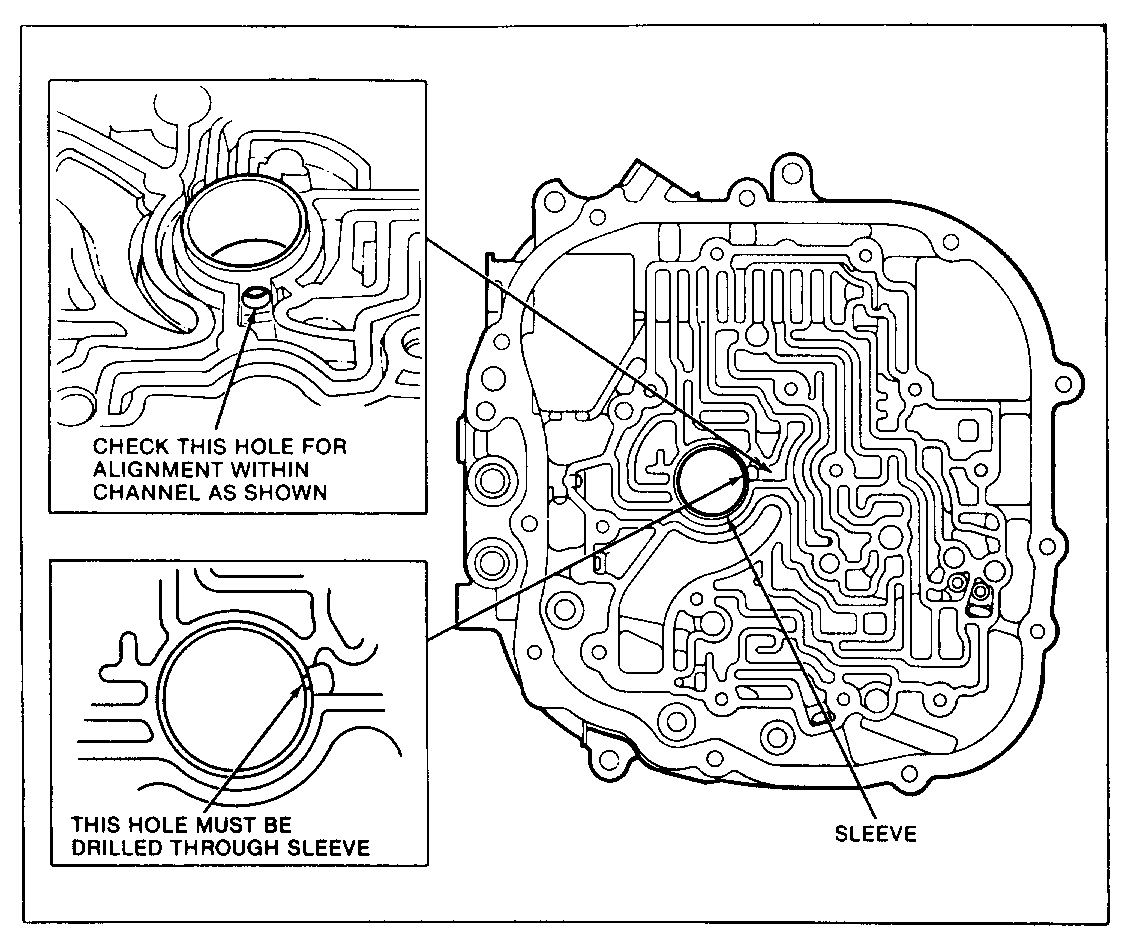
General Motors bulletins are intended for use by professional technicians, not a "do-it-yourselfer". They are written to inform those technicians of conditions that may occur on some vehicles, or to provide information that could assist in the proper service of a vehicle. Properly trained technicians have the equipment, tools, safety instructions and know-how to do a job properly and safely. If a condition is described, do not assume that the bulletin applies to your vehicle, or that your vehicle will have that condition. See a General Motors dealer servicing your brand of General Motors vehicle for information on whether your vehicle may benefit from the information.
